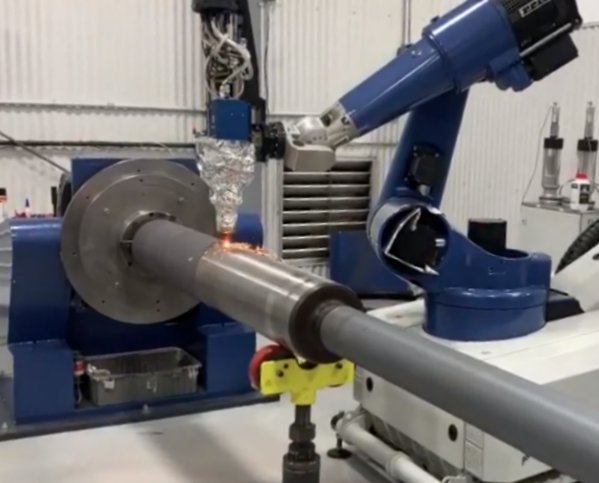Big Savings from Laser Cladding
Laser cladding is a widely used technology for the reconditioning of worn parts and the prevention of corrosion. Essentially it is the technique of welding one metal to the surface of another through the coaxial delivery of a stream of metal powder and a highly focussed laser beam.
Repair don’t scrap
The heat effect of laser cladding is one tenth of that used in traditional welding. No post-weld heat treatment is required either. In addition, laser cladding achieves a 100% attachment of the filler metal to the base material.
The technique can be used to weld on high carbon steel components. With traditional methods, welding such components is usually unacceptable to classification societies. However, with laser cladding such welding is approved on a case by case basis.
All of this goes to explain how tens of thousands of pounds can be save by repairing expensive parts with laser cladding. For a fraction of the cost of replacement, worn parts can be brought up to spec and kept in service.
Host of applications

With traditional cladding and welding methods, choices of metals are limited. The welder usually has to use the same metal as the base metal.
Not so with laser cladding. Virtually any metal or alloy can be welded to the base metal – from 420 stainless to P20, H13 to Waspaloy.
This flexibility allows laser cladding to replace nitriding. Instead of subjecting a surface metal with nitrogen through gas, salt bath or plasma, an alloy of choice can be applied. With the extremely low temperature heat affected zone, there are no changes to the to the surface of the base metal.
Laser cladding can be also a way of saving material costs. For example, a cutting blade could be designed using “hard enough” inexpensive tool steel. Through laser cladding, an alloy or metal with excellent strength and cutting capabilities could then be added.
This would not only save on material costs. It would save on machining too because the base metal would be far easier to cut.
Mobile solutions
Many components that can benefit from laser cladding are heavy, cumbersome and difficult to move. Our product partners, Alpha Laser, are pioneers in mobile welding and cladding.
Both their ALFLAK and AL-ROCK laser cladding machines can be mounted on a self-propelled caterpillar track. The machines can then be effortlessly driven directly to the component in need of repair.
Once on site, a flexible projecting laser arm can be programmed to reach into the deepest and most unyielding of moulds to carry out the necessary cladding process.
For more information on Alpha Laser’s range of laser cladding machines including the mobile ALFLAK and AL-ROCK, please contact sales@tlm-laser.com